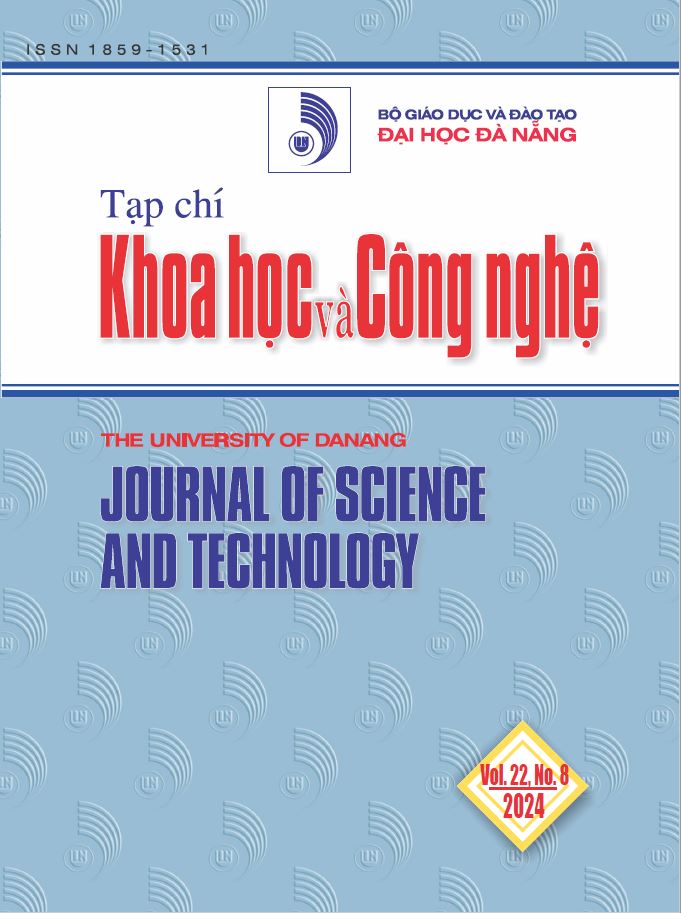Ứng dụng mô hình SAM trong phân tích liên kết ngành, khả năng phát thải khí CO2 và tạo việc làm của các ngành kinh tế tại Việt Nam
 Tóm tắt: 289
Tóm tắt: 289
 |
|  PDF: 178
PDF: 178 
##plugins.themes.academic_pro.article.main##
Author
-
Nguyễn Hữu Nguyên XuânTrường Đại học Kinh tế - Đại học Đà Nẵng, Việt NamNguyễn Mạnh ToànĐại học Đà Nẵng, Việt NamNguyễn Minh LýTrường Đại học Sư phạm - Đại học Đà Nẵng, Việt Nam
Từ khóa:
Tóm tắt
Việc phát triển các ngành kinh tế có tác động lớn đến nền kinh tế quốc dân với lượng phát thải CO2 nhỏ và có khả năng tạo ra việc làm thật sự trở nên cấp thiết ở các quốc gia, đặc biệt khi nhiệt độ toàn cầu đang nóng dần lên. Bài báo xây dựng mô hình Ma trận hạch toán xã hội Việt Nam 2020 (VNSAM 2020) kết hợp với dữ liệu khí thải CO2 để làm rõ mức độ liên kết ngành, khả năng phát thải và tạo việc làm của các ngành kinh tế. Kết quả phân tích đã xác định được các ngành kinh tế ưu tiên phát triển, đồng thời nhấn mạnh vai trò quan trọng của hộ gia đình đối với tăng trưởng kinh tế, tạo việc làm và giảm lượng khí thải CO2. Dựa trên kết quả nghiên cứu, bài báo đã đề xuất các khuyến nghị nhằm phát triển các ngành kinh tế ưu tiên phát triển, đảm bảo lộ trình tái cơ cấu kinh tế tối ưu để đạt được sự phát triển kinh tế bền vững ở Việt Nam.
Tài liệu tham khảo
-
[1] MONRE, Report on the State of the National Environment for the Period 2016 – 2020, gov.vn/, 2021. [Online]. Availabe: http://dwrm.gov.vn/uploads/download/files/20211108_bao-cao-htmt-2016-2020_f.pdf [Accessed April 03, 2024].
[2] Asia Pacific Foundation of Canada, “Vietnam Partners with G7 Countries to Accelerate Transition from Coal to Renewables”, Asia Pacific Foundation of Canada, Dec.21,2022. [Online]. Availabe: https://www.asiapacific.ca/sites/default/files/publication-pdf/
Insight%20Southeast%20Asia%20Vietnam%20Energy%20Transition%20December%2021%2C%202022.pdf [Accessed April 03, 2024].
[3] Bai, B. Zhang, Y. Ning, and Y. Wang, “Comprehensive analysis of carbon emissions, economic growth, and employment from the perspective of industrial restructuring: a case study of China”, Environmental Science and Pollution Research International, vol. 28, no. 36, pp. 50767–50789, May 2021, doi: 10.1007/s11356-021-14040-z.
[4] B. Chenery and T. Watanabe, “International comparisons of the structure ofproduction”, Econometrica, vol. 26, no. 4, p. 487, Oct. 1958, doi: 10.2307/1907514.
[5] P. Jones, “The measurement of Hirschmanian linkages”, the Quarterly Journal of Economics, vol. 90, no. 2, p. 323, May 1976, doi: 10.2307/1884635.
[6] Dietzenbacher and J. A. V. D. Linden, “Sectoral and spatial linkages in the EC production structure”, Journal of Regional Science, vol. 37, no. 2, pp. 235–257, May 1997, doi: 10.1111/0022-4146.00053.
[7] Trinh, K. Kobayashi, T.-D. Vu, P. L. Hoa, and N. V. Phong, “New Economic Structure for Vietnam toward Sustainable Economic Growth in 2020”, Global Journal of Human Social Science - Sociology Economics & Political Science, Vol. 12, no. 10, 2012.
[8] M. Toan, O. N. Chuong, and N. T. Huong, Multipliers and indices of linkages of the Vietnamese economy”, Journal of Economic Studies, vol. 2, no. 7, 2019.
[9] A. Bekhet, “Output, Income and Employment Multipliers in Malaysian Economy: Input-Output Approach”, International Business Research, vol. 4, no. 1, Nov. 2010, doi: 10.5539/ibr.v4n1p208.
[10] Wen and Q. Wang, “Identification of key sectors and key provinces at the view of CO2 reduction and economic growth in China: Linkage analyses based on the MRIO model”, Ecological Indicators, vol. 96, pp. 1–15, Jan. 2019, doi: 10.1016/j.ecolind.2018.08.036.
[11] O’Sullivan and D. Edler, “Gross Employment Effects in the Renewable Energy Industry in Germany—An Input–Output Analysis from 2000 to 2018”, Sustainability, vol. 12, no. 15, p. 6163, Jul. 2020, doi: 10.3390/su12156163.
[12] E. Kahn and E. T. Mansur, “Do local energy prices and regulation affect the geographic concentration of employment?”, Journal of Public Economics, vol. 101, pp. 105–114, May 2013, doi: 10.1016/j.jpubeco.2013.03.002.
[13] Mulatu and A. Wossink, “Environmental regulation and location of industrialized agricultural production in Europe”, Land Economics, vol. 90, no. 3, pp. 509–537, Jul. 2014, doi: 10.3368/le.90.3.509.
[14] E. S. Borges and E. E. Montibeler, “Input–Output Matrix study: A theoretical frame to study the impact of Brazilian IPI reduction in final demand”, EconomiA, vol. 15, no. 2, pp. 228–241, May 2014, doi: 10.1016/j.econ.2014.03.004.
[15] D’Amato et al., “Green, circular, bio economy: A comparative analysis of sustainability avenues”, Journal of Cleaner Production, vol. 168, pp. 716–734, Dec. 2017, doi: 10.1016/j.jclepro.2017.09.053.
[16] Battaglia, E. Cerrini, and N. Annesi, “Can environmental agreements represent an opportunity for green jobs? Evidence from two Italian experiences”, Journal of Cleaner Production, vol. 175, pp. 257–266, Feb. 2018, doi: 10.1016/j.jclepro.2017.12.086.
[17] İ. Unay-Gailhard and Š. Bojnec, “The impact of green economy measures on rural employment: Green jobs in farms”, Journal of Cleaner Production, vol. 208, pp. 541–551, Jan. 2019, doi: 10.1016/j.jclepro.2018.10.160.
[18] W. Leontief, “Quantitative input and output relations in the economic systems of the United States”, the Review of Economics and Statistics, vol. 18, no. 3, p. 105, Aug. 1936, doi: 10.2307/1927837.
[19] Stone, “A Social Accounting Matrix for 1960”, A Program for Growth, London: Chapman and Hall, 1962.
[20] P. Dols and M. L. Llop, “Modelling a reduction of greenhouse gases emissions in the Catalan economy: the NAMEA approach”, ideas.repec.org, May 2010. [Online]. Available: https://ideas.repec.org/
p/ekd/002596/259600132.html [Accessed April 03, 2024].
[21] C. Garcia and A. L. Hidalgo-Capitán, “Green economy and green jobs: a multisectoral analysis by means of Spain’s social accounting matrix”, Brazilian Journal of Political Economy, vol. 43, no. 2, pp. 380–397, Apr. 2023, doi: 10.1590/0101-31572023-3380.
[22] A. C. Flores and R. L. Cabaco, “Análisis del sector aeronáutico en Andalucía y Sevilla”, Dialnet, 2015. [Online]. Available: https://dialnet.unirioja.es/servlet/articulo?codigo=5405264 [Accessed April 03, 2024].
[23] C. Hood and P. N. Rasmussen, “Studies in Inter-Sectoral Relations.”, Journal of the American Statistical Association, vol. 52, no. 277, p. 115, Mar. 1957, doi: 10.2307/2281420.
[24] R. E. Miller and P. D. Blair, Input-Output analysis. Cambridge University Press, 2009. doi: 10.1017/cbo9780511626982.



